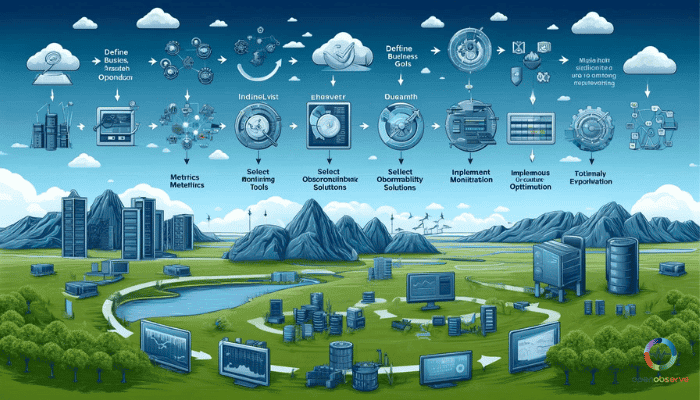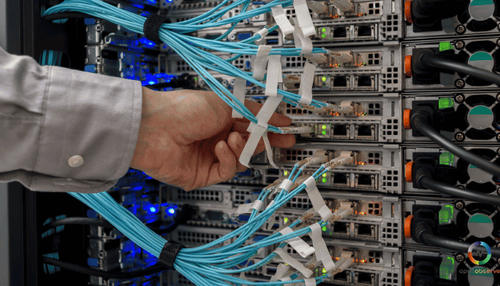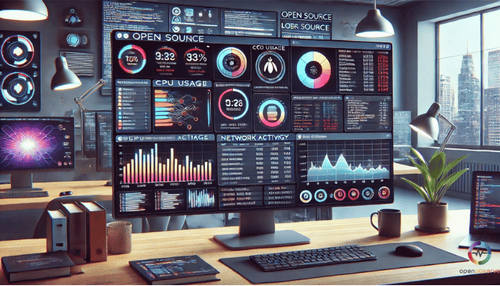
A robust observability strategy is no longer a luxury but a necessity. As systems become increasingly complex, relying solely on traditional monitoring approaches can leave blind spots in your infrastructure, leading to delayed issue detection and prolonged downtimes.
Observability, on the other hand, allows for deeper insights into your systems. It offers visibility across logs, metrics, and traces to provide a holistic view of system performance.
By implementing a thoughtful observability strategy, you can ensure that your team is equipped to detect issues in real-time, pinpoint root causes quickly, and continuously improve system health. This proactive approach fosters operational resilience, reducing the risk of outages and boosting overall reliability.
This guide will walk you through the critical steps to developing an observability strategy that aligns with your enterprise goals, from assessing your organization’s needs to selecting the right tools and implementing best practices.
Let’s begin by defining what observability truly means and how it differs from traditional monitoring approaches.
Understanding the Concept of Observability
Observability has become a critical strategy for enterprises seeking to monitor complex systems efficiently. Although it is often confused with traditional monitoring, the two differ significantly in scope and functionality.
While traditional monitoring captures specific data points to determine if systems function correctly, observability goes deeper by providing a holistic view of the entire system's internal state.
It helps you identify the "why" behind performance issues, not just the "what."
Difference Between Observability and Traditional Monitoring
Traditional monitoring focuses on gathering predefined metrics to track known issues, often working with static thresholds or alerts based on past behaviors.
Observability, on the other hand, enables a more dynamic approach by allowing you to ask new, unanticipated questions about your system's behavior as it evolves.
With observability, you’re not just reacting to failures or errors—you’re proactively exploring system states, discovering unknown problems, and improving operational intelligence.
Instead of relying solely on static dashboards, observability allows you to dive into real-time metrics, traces, and logs to uncover deeper insights.
Components of Observability: Logs, Metrics, and Traces
Effective observability rests on three core pillars: logs, metrics, and traces. Each plays a specific role in understanding and maintaining system health:
- Logs provide detailed, timestamped records of events within an application, allowing for granular analysis of system behaviors.
- Metrics offer numerical data points, representing aspects like resource consumption (CPU, memory) or user interaction rates. Metrics are essential for tracking performance over time and setting alerts based on specific thresholds.
- Traces map out the entire journey of a request through distributed systems, helping you pinpoint bottlenecks or errors in complex workflows.
OpenObserve combines these three pillars into one unified platform, allowing you to store, analyze, and visualize logs, metrics, and traces in real time. Its scalable and intuitive design empowers teams to make faster, data-driven decisions, transforming how enterprises approach their observability strategy.
Sign up for OpenObserve today and elevate your observability strategy with real-time insights and seamless data integration.
Next, we’ll assess your organization’s specific observability needs to ensure that your strategy aligns with business goals.
Read more on Revolutionizing Observability - Unveiling OpenObserve, the High-Performance, Cloud-Native Platform
Assessing Organizational Needs
Before implementing an observability strategy, it’s crucial to understand the current state of your organization’s monitoring and what gaps exist. Observability is a toolset and a philosophy that requires alignment with your business goals.
By assessing your organizational needs, you can ensure that your observability strategy drives real value, improving operational efficiency and system resilience.
Evaluating Current Monitoring Practices
The first step in this process is to evaluate your current monitoring practices. Many organizations rely on traditional monitoring tools that track predefined metrics or send alerts based on fixed thresholds.
While useful, this approach often needs to be revised when systems become more complex, especially in modern cloud-native or microservices architectures.
Ask yourself: Are you only monitoring known issues?
How much insight do your current tools provide into unknown or emerging problems?
Do your current dashboards give you a complete picture, or do they leave gaps?
Understanding these limitations will help you design a more proactive observability strategy beyond reactive monitoring.
Identifying Specific Goals of Observability
Once you clearly understand your current practices, it’s time to define the specific goals for your observability strategy. This will vary depending on your organization’s structure, industry, and technology stack, but common objectives include:
- Improving system reliability by identifying root causes of downtime faster.
- Enhancing performance monitoring across distributed services.
- Enabling more data-driven decision-making with real-time metrics, logs, and traces.
- Reducing mean time to resolution (MTTR) by quickly diagnosing and fixing issues.
Every goal should align with your business objectives and be actionable.
For example, if you’re running mission-critical applications, you might prioritize faster incident resolution. If scalability is a concern, your observability tools should help track and measure how your infrastructure is scaling under increased loads.
Next, we’ll dive into the process of selecting observability tools and platforms that align with your specific goals and provide the visibility needed to optimize your systems effectively.
Read more about Understanding Enterprise Observability Strategy
Selecting Observability Tools and Platforms
Choosing the right tools and platforms for your observability strategy is crucial for achieving visibility into system performance.
Each tool offers a unique set of strengths and features, so it’s essential to evaluate them based on your organization's specific requirements. Below are some factors to consider:
1. Evaluating Strengths and Features of Tools
When selecting observability platforms, consider how each tool aligns with your infrastructure's needs.
Factors like the depth of monitoring, support for logs, metrics, and traces, and the ability to correlate data across these areas are crucial.
OpenObserve stands out with its unified data platform that offers centralized logging, metrics, and traces, enabling you to visualize all critical data on a single platform.
This holistic view minimizes the need for multiple tools and simplifies troubleshooting.
2. Considering Factors like Data Retention, Deployment, and Integration
A significant aspect of a robust observability strategy is long-term data retention. OpenObserve excels in this area with its scalable architecture that ensures you can store data over extended periods without performance degradation.
This is particularly valuable for cloud-native architectures, where seamless integration, scalability, and data retention are critical for tracking system behaviors over time.
OpenObserve's compatibility with popular environments, such as Kubernetes and containerized applications, further strengthens its position as a versatile solution. Its flexible deployment options—whether in the cloud, on-premises, or hybrid—allow it to fit into diverse organizational setups.
Discover more about OpenObserve’s capabilities and how it can fit into your infrastructure by visiting our website.
Next, we’ll explore best practices for implementing observability tools and processes to ensure your strategy is set up for long-term success.
Read more about Understanding Kubernetes and container resource management using rust
Implementing Best Practices
Getting observability right means following a clear set of best practices to ensure your strategy is not just implemented but also scalable and future-proof.
Let’s look at three key areas where you can make a significant impact:
1. Starting Small and Scaling
It's tempting to want to implement an enterprise-wide observability solution right away, but a more effective approach is to start small and scale gradually. Focus on a core component of your system, build observability around it, and once successful, expand that to other parts.
OpenObserve is particularly suited for this approach. Its lightweight setup and easy deployment allow teams to roll out observability in incremental steps without overwhelming their infrastructure.
2. Promoting Collaboration and Automation
An observability strategy should involve not only the operations team but also developers and other key stakeholders. By encouraging collaboration between these teams, you ensure shared ownership of the observability process.
Automating data collection and monitoring workflows can also help eliminate human error.
OpenObserve supports seamless integration with CI/CD pipelines, fostering continuous monitoring and automating responses to critical events.
3. Creating Accessible Data Visualizations
Data becomes actionable when it’s presented in a way that everyone can understand. Real-time dashboards are essential for creating accessible, insightful views of your system’s health. OpenObserve excels in this area with its custom visualization capabilities that allow you to tailor your dashboards based on specific metrics, making it easier to track KPIs and troubleshoot issues as they arise.
By starting with a small-scale implementation, promoting cross-team collaboration, and leveraging effective visualizations, you’ll be setting your observability strategy on the path to success.
Read more about Unifying Observability and Troubleshooting: The Power of Observability Dashboards
Conclusion
In developing an effective observability strategy, the key is to align your organizational goals with the tools and practices that give you complete visibility over your systems. By focusing on the core components like logs, metrics, and traces, and ensuring your teams collaborate on automation and data collection, your observability plan will evolve to meet your enterprise’s changing needs.
OpenObserve is designed to fit seamlessly into this strategy, offering real-time visualizations, scalable data storage, and deep integrations that make it an essential part of your observability toolkit.
Sign up for OpenObserve today to experience how it simplifies the observability process for enterprises, or visit our website to explore the platform’s full capabilities.
You can also find us on GitHub for more technical details and community discussions.



